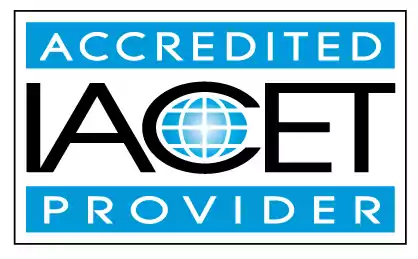Identify and contemplate bias and explore anti-bias approaches that support working with children and families.
Explore bias and anti-bias approaches to support children and families. Discover effective strategies for promoting child development and working with children with special needs in early childhood education and child care centers.Trainings incorporating this outcome
CDA Subject Areas
Proficiency Level
Target Audience
Topic Areas
States
Alabama (16) Alaska (16) Alberta (18) Arizona (16) Arkansas (8) Australia (16) British Columbia (6) California (16) Colorado (16) Connecticut (16) Delaware (16) District of Columbia (16) Florida (16) Georgia (14) Hawaii (16) Idaho (16) Illinois (11) Indiana (16) Iowa (16) Jamaica (15) Kansas (16) Kentucky (7) Louisiana (16) Maine (16) Manitoba (15) Maryland (16) Massachusetts (14) Michigan (16) Minnesota (14) Mississippi (16) Missouri (6) Montana (16) Nebraska (15) Nevada (9) New Hampshire (16) New Jersey (8) New Mexico (16) New York (11) Newfoundland and Labrador (16) North Carolina (9) North Dakota (16) Nova Scotia (9) Ohio (16) Oklahoma (16) Ontario (12) Oregon (15) Pennsylvania (14) Prince Edward Island (9) Puerto Rico (16) Quebec (9) Rhode Island (16) Saskatchewan (16) South Carolina (7) South Dakota (16) Tennessee (8) Texas (17) Thailand (15) United Kingdom (15) Utah (16) Vermont (16) Virgin Islands (15) Virginia (16) Washington (16) West Virginia (16) Wisconsin (11) Wyoming (12)
120 hours courses
102 hours courses
45 hours courses
35 hours courses
32 hours courses
30 hours courses
6 hours courses
5 hours courses
2 hours courses
Related Outcomes
- Identify strategies for the child care provider that will promote successful child development. Identify strategies for working with children with special needs
- Identify appropriate practices for identify and demonstrate an children: Identify importance of individual planning
- Identify appropriate practices for identify and demonstrate an children: Identify examples of appropriate activities for different ages
- Identify the components of a safe and healthy family childcare environment for children
- Identify Office of Child Care Regulations that monitors the environment for children, staff, and families
- Recognize the importance of a positive and respectful attitude in working with all children and their families.
- Describe ways to analyze classrooms for an anti-bias approach.
- Identify the importance of documenting the home visitor's work with the family.
- Identify examples of how to share breastfeeding policies / breastfeeding support to families and staff
- Identify components of professionalism in the workplace, including caregivers’ professional responsibilities to children, families, and coworkers
- Define self-esteem and identify issues and strategies for support of school age children.
- Identify appropriate practices for identify and demonstrate an children: components of a lesson plan
- Identify ways to support children’s development using the arts.
- Identify the importance of maintaining cultural sensitivity while working with families during home visiting.
- Identify appropriate practices for identify and demonstrate an children: Define Developmentally Appropriate Practice
- Identify the components of positive relationships with children, co-workers and families.
Related Articles
- Childcare training
- Culturally Sensitive Classrooms
- Promoting Diversity, Equity, and Inclusion in Child Care: A Guide to Culturally Responsive Teaching
- Understanding Oppositional Defiant Disorder (ODD) in the Context of Child Care Providers
- ChildCareEd Now Offering Montessori Training Courses for Early Childhood Educators
- Invest in Your Skills, Invest in Children: ChildCareEd Training for Michigan Providers
- The Guardian of Giggles: The Magic of Child Care Professionals, How Can You be One?
- The Importance of Trauma-Informed Care in Early Childhood Education
- Ringing in Resilience: Simple Strategies for Trauma-Informed Early Education in 2025
- You Won't Believe These 7 Must-Have Skills for Childcare Providers!
- Infant-Toddler CDA Certification: Your Key to Specializing in Early Childhood Care
- Child Abuse and Neglect Training: Empowering Educators to Recognize and Respond
- What They Don’t Tell You About Child Abuse and Neglect Training (But Should)
- How Do I Create an Inclusive Environment for Children with Diverse Needs?
- 🗣️ How Can I Talk to Parents About Bullying Without Blame or Conflict?🤝
- 🌍 How Can Culture, Communication, and Collaboration Improve Child Assessment?
- 🧩 How Can You Make Your Classroom More Inclusive for Children with Autism?
- 🌎 How Do I Support Diverse Families While Honoring Their Culture and Values?💜
 12 CEUs
12 CEUs